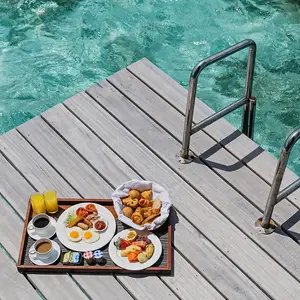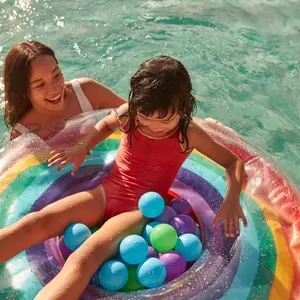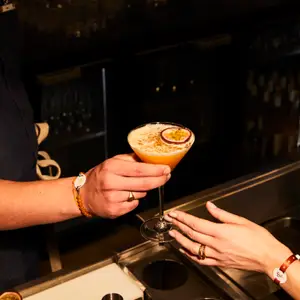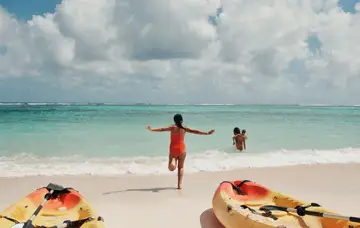

Key Facts About Punta Cana's Beaches, Culture, Nature & Travel Experiences
Punta Cana is one of the Caribbean’s most sought-after travel destinations, known for its white-sand beaches, turquoise waters and warm hospitality.
What Makes Punta Cana Special? Key Facts About Its Beaches, Culture, Nature & Travel Experiences
Punta Cana is one of the Caribbean’s most sought-after travel destinations, known for its white-sand beaches, turquoise waters and warm hospitality. Located at the eastern tip of the La Altagracia Province in the Dominican Republic, it faces both the Caribbean Sea and the Atlantic Ocean, creating landscapes that feel tropical, expansive and open to exploration. Yet beyond its beauty and well-known resort offerings, there are many fun facts about Punta Cana that reveal the depth of its culture, history and natural environment. These details offer travelers a deeper appreciation of the destination, whether they’re returning for the fifth time or visiting for the first.
The region’s story includes Indigenous Taíno heritage, global influences, local fishing and farming traditions, coral reef conservation and a thriving, diverse community. Punta Cana is also a gateway to the Dominican Republic’s broader geography, connected to Santo Domingo, the nation’s capital and surrounded by protected islands, forests and reefs. Even the layout of modern Punta Cana reflects intentional design: sustainable tourism growth, preservation of nature and community development centered around welcoming travelers while supporting local identity.
For travelers seeking a seamless vacation experience, the Punta Cana International Airport makes arriving remarkably easy. Built with open-air architecture and palm-thatched roofing, it creates a relaxed atmosphere from the moment visitors enter. And for those who wish to experience everything from snorkeling and dancing to wellness and beachfront luxury, the region offers endless possibilities. One way to enjoy it all with ease is by staying at the Punta Cana All Inclusive Resort, where dining, activities, beaches and entertainment come together in one immersive coastal environment.
The following four chapters explore the Punta Cana facts that make this destination more than just a place to relax. They reveal the culture, community and natural wonders that define its spirit.
Explore Club Med Punta Cana
See all resorts1 - Origins, History and Growth of Punta Cana
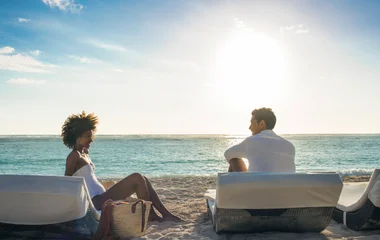
Origins, History and Growth of Punta Cana
Punta Cana’s transformation into a world-renowned destination began relatively recently. Before the 1970s, the area was remote, largely covered by dense palm forests and connected by only a few rustic roads. Small fishing and farming communities lived close to nature, relying on coastal waters and fertile land. The region’s early identity was shaped by the cana palm, a native tree whose long, pale fronds inspired the name “Punta Cana,” meaning “the place of the cana palm point.” This connection to the land remains woven into the cultural memory of the region today.
As tourism began to emerge, developers recognized the coastline’s pristine beaches and its potential for sustainable resort growth. However, rather than build rapidly or without planning, Punta Cana’s early developers worked intentionally, creating infrastructure that connected the region to Santo Domingo and other communities while protecting important natural landscapes. The eventual construction of the private Punta Cana International Airport became a turning point: it made travel direct, smooth and efficient, and it became the first privately financed international airport in the world. Today, it is one of the busiest airports in the Caribbean, welcoming millions of travelers annually.
Despite its growth, Punta Cana has maintained a focus on blending hospitality with conservation. Coral reefs near the shoreline are monitored and protected, and many resorts and businesses collaborate with marine conservation groups to restore reef systems and educate visitors about sustainable tourism. Inland, mangroves and protected ecological reserves preserve habitat for native birds, reptiles and plant species. Travelers who explore these natural areas encounter an environment that feels balanced and organically connected.
Community remains central to Punta Cana’s identity. Local residents are proud of their cultural heritage and contribute to the region’s vibrant atmosphere. This includes everything from family-owned restaurants in Punta Cana Village to artisan markets and music gatherings in nearby towns. Travelers who step beyond the shoreline find stories, flavors and friendships that reflect the region’s welcoming spirit. Over time, Punta Cana has become more than a travel destination. It is now a cultural and ecological region shaped by history, community and a deep relationship with the coast. Recognizing this heritage enriches every visit.
2 - Beaches, Marine Life and Natural Landscapes

Beaches, Marine Life and Natural Landscapes
The beaches of Punta Cana are among the most iconic in the Caribbean. Stretching more than 30 miles along the coast, these beaches are known for their soft white sand and clear turquoise waters. Bávaro Beach is one of the most popular, offering gentle waves and wide expanses of sand perfect for strolling, swimming or relaxing under palm shade. The beauty of the coastline is not manufactured or imported. It is part of the natural geography of the Caribbean Sea, shaped by coral reefs that shelter the shoreline and keep waters calm and clear.
Yet not all beaches in Punta Cana are alike. At Cabeza de Toro, visitors find a more intimate and peaceful shoreline with lush vegetation and mangrove surroundings. The beach here has a more secluded feel, and eco-tours provide opportunities for guided marine exploration. Meanwhile, Macao Beach offers a more dramatic and adventurous environment, with rolling waves that attract local and traveling surfers. Each beach reflects a different rhythm of life, inviting exploration based on mood and interest.
The offshore environment is equally dynamic. Coral reefs thrive near the coastline, supporting vibrant ecosystems of tropical fish, rays, sea turtles and colorful marine invertebrates. Snorkeling tours introduce travelers to underwater landscapes that feel full of movement and color. Conservation organizations in and around Punta Cana are actively restoring coral and educating visitors on reef-safe sunscreen and responsible snorkeling practices. These efforts help ensure that the region’s natural treasures remain protected for future generations.
Beyond the coastline, Punta Cana’s natural landscapes include forests, caves, freshwater springs and protected ecological zones. Visitors can explore hiking trails, cenote-like lagoons or caves featuring ancient limestone formations. Inland wildlife ranges from the Hispaniolan woodpecker to iguanas, butterflies and tropical birds. Guided tours often highlight the ecological importance of these environments, connecting nature to culture and history.
No discussion of nature in Punta Cana would be complete without mentioning Saona Island, a protected reserve located just off the coast. Known for its shallow crystal-clear waters, sandbars and palm-framed beaches, Saona feels like a postcard brought to life. Whether for swimming, photography or peaceful exploration, Saona Island is one of the region’s most treasured natural experiences.
3 - Cultural Traditions, Music, Community and Flavor

Cultural Traditions, Music, Community and Flavor
Punta Cana’s cultural identity is rooted in a blend of Taíno, African and Spanish influences that have shaped the music, dance, food and storytelling of the region. These traditions remain alive and visible today, both in daily life and in celebrations throughout the year. One of the most famous events is Carnival, held each spring, where local communities showcase elaborate costumes, rhythmic music, dance processions and traditional folklore characters that fill the streets with energy and meaning.
Music is central to Dominican culture. Merengue and bachata, two genres that originated in the Dominican Republic, remain essential forms of expression. Travelers will hear these rhythms everywhere, from beachside cafés to nighttime dance gatherings. Learning a few steps of bachata can be both a joyful and memorable way to connect with local culture. Dance lessons are often offered at resorts, cultural centers or local nightlife venues, providing a welcoming environment for beginners and experienced dancers alike.
Food also plays a vital role in cultural storytelling. Traditional Dominican cuisine includes dishes such as sancocho (a hearty stew), arroz con pollo (seasoned chicken and rice), mangu (mashed plantains) and fresh seafood seasoned with citrus and local herbs. Dining in Punta Cana Village, at beachfront restaurants or at local food stalls offers opportunities to experience flavors that reflect both heritage and geography. Cooking classes, rum tastings and cacao workshops further deepen travelers’ connection to the region’s agricultural traditions.
Local art, crafts and handmade goods are another window into cultural identity. Markets and artisan co-ops offer wood carvings, handwoven baskets, colorful paintings and jewelry featuring larimar, a rare blue gemstone found only in the Dominican Republic. Purchasing locally crafted goods directly supports regional artisans and provides travelers with meaningful keepsakes.
Culture in Punta Cana is not only something to observe. It is meant to be experienced, shared and enjoyed. Travelers who step into the rhythm of the region discover its warmth, creativity and capacity for celebration.
4 - Adventure, Relaxation and Travel Experiences
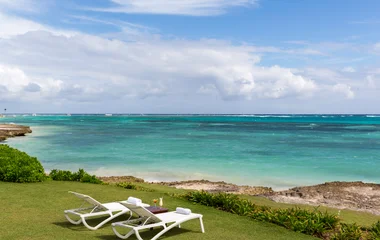
Adventure, Relaxation and Travel Experiences
Punta Cana is a destination that offers adventure and relaxation in equal measure. For travelers seeking excitement, the region provides endless opportunities: zip-lining above forest canopies, ATV excursions through rural landscapes, horseback riding along secluded shorelines and parasailing high above the ocean. Each adventure offers a different perspective of Punta Cana’s natural geography, from sweeping coastal views to shaded inland beauty.
On the water, activities include snorkeling, paddleboarding, catamaran sailing and scuba diving. The warm, clear waters of the Caribbean Sea create ideal conditions for marine exploration. Travelers can join group tours or private charters depending on how they prefer to engage with the ocean. Kayaking through mangroves, sailing along coastal horizons or swimming near coral-fringed coves enhances the sense of connection to the natural world.
For those seeking a slower pace, Punta Cana offers spaces of deep rest and renewal. Beachfront hammocks, spa rituals inspired by Caribbean botanicals and quiet sunrises create opportunities for stillness. Wellness programs, yoga on the sand and mindful coastal walks provide grounding experiences that help travelers return home refreshed and inspired.
Families find Punta Cana especially welcoming, thanks to safe beaches, warm waters and resort environments thoughtfully designed for all ages. Many all-inclusive properties provide supervised children’s clubs, splash areas, creative workshops and outdoor discovery programs that introduce young travelers to nature, marine life and local culture. Teen zones and adventure activities create space for older children to build confidence and independence, while parents enjoy time at the spa, on the beach or dining together. Shared activities, such as snorkeling trips, sailing lessons or sunset walks along the shore, offer meaningful ways for families to connect and create memories. Punta Cana’s balanced blend of comfort, exploration and cultural warmth makes it an easy destination where families can relax and feel at home.
A stay at the Club Med’s Punta Cana All Inclusive Resort provides access to curated dining, daily activities, beachfront relaxation and immersive cultural experiences, all within one harmonious environment. Whether travelers prioritize ease, exploration or a blend of both, Punta Cana makes it possible to shape a vacation that feels personal and memorable.
